Onside Media reporter Mandy Gardner got in touch with bare market founder Dayna Stein to talk about opening a new retail location months before the COVID-19 Pandemic hit last year. Dayna opened up about starting a business during a strange economic time and explained why it’s essential to have a more realistic outlook on environmental sustainability.
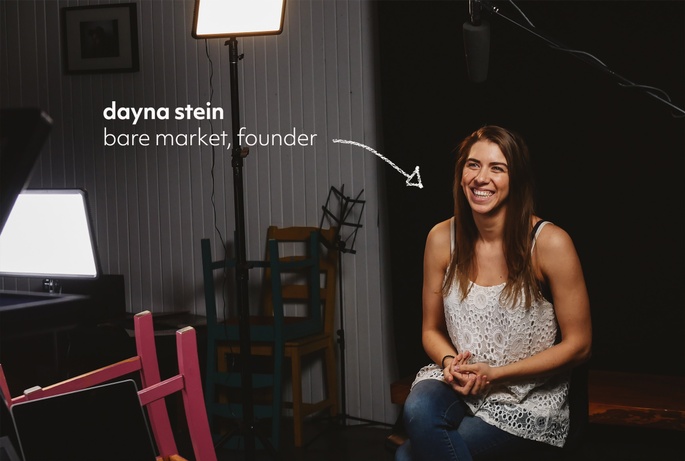
It looks like the Market initially opened in Toronto in early 2020. That’s probably a terrible time to have opened any business where walk-in customers are key! How did the shop survive the almost immediate issues related to COVID-19?
As I know, many small business owners could agree, the unprecedented events of COVID-19 amidst the opening of a new business could not have been more shocking. However, if there is anything this year has taught us, being able to adapt and be flexible amidst an ever-changing international Pandemic is the only way to stay afloat amongst the inconsistencies each day brings.
It has been a struggle to make predictions and plan for the uncertain future, so, instead, much of our focus is on how to pivot most effectively. Bare Market began as a pop-up at local farmer’s markets and supportive community retailers (like Patagonia) in June of 2018. We opened our brick-and-mortar location 6 weeks prior to the first shut down, which was an enormous support in allowing the business to build what has become a very loyal customer base and encouraging community.
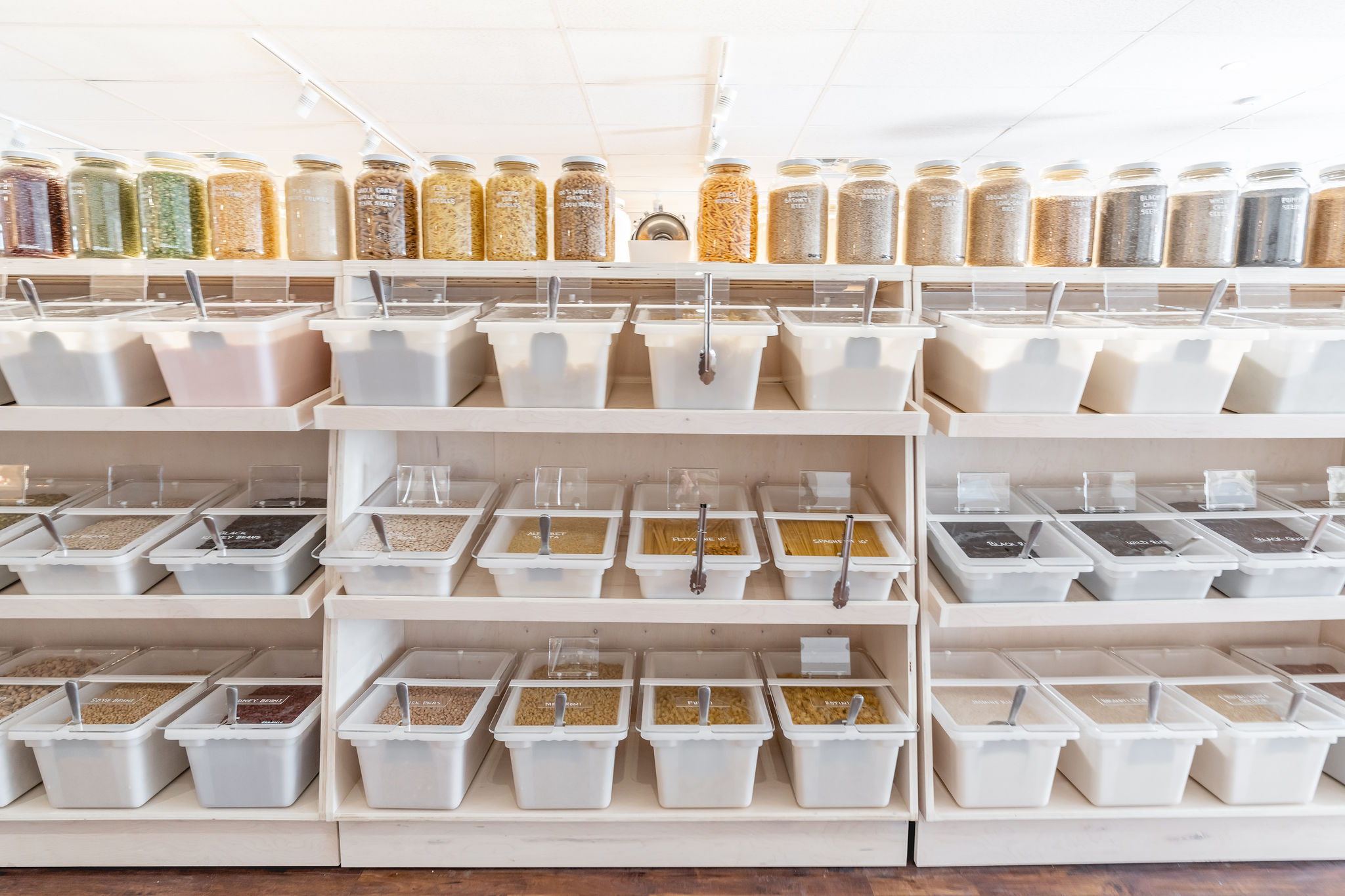
The weekend before the shutdown, we pre-emptively closed our doors to in-store shopping and switched to an online store model. We continued the online model with curbside pick-up throughout the summer of 2020 and eventually expanded our services to include local deliveries in the GTA while shipping a select amount of non-perishable items throughout the country. This gave us time to strategize a safe and sanitary way to reopen, which we finally did in September 2020.
We moved to a one-scoop-per-product policy, beginning a week prior to the shutdown and expanded our in-store deposit system to online sales allowing for a low waste shopping option in-store and pick-ups and deliveries. When we reopened the café in the summer, we reinstated the BYOC (bring your container) policy and expanded that to the entire store for reopening in September. If it had not been for the community interest and local support in our business that operates with the primary focus of reducing waste throughout the supply chain, bare market might have faced a bleaker outcome this past year.
We are very thankful for the East End community and those who travel across the region to shop or order through us. We are very hopeful that this closed-loop model will grow as the word gets out that there are options outside of the conventional take-make-waste shopping model, which tends to value convenience and the bottom line over all else.

Did employees’ roles unexpectedly change during the last year to accommodate different shopping options like online ordering and delivery/pick-up?
The employee roles did expand and adapt as the store did. Employees were initially retail associates who were involved in educating and helping customers while fulfilling the traditional roles in a grocery store—ensuring shelves are stocked, maintaining the cleanliness of the store and ringing up customer orders.
This shifted into a more varied and flexible role when the store was doing online orders only. bare market turned into a warehouse operation wherein a smaller group of staff labeled, weighed, filled, and organized customer orders by product category (produce, dry goods, liquids, frozen, low-waste lifestyle products) and later on, by order number. When we were busy (early in the Pandemic in the Spring) we’d have five or more staff a day packing orders and managing pick-ups.

Early on, we’d also have up to 5 customers scheduled to come to the store every 10 minutes (one by one) to pick up their goods for 4 hours a day. This required immense amounts of coordination to efficiently and correctly grab their items from multiple locations in-house (i.e. dry goods/liquids/low waste goods at the front, frozen goods in the freezers, and produce in fridges at the back of house). Typically, of those staff, only one would handle the pick-up frenzy by allowing one customer in the store at a time, guiding them through the small sectioned off walking route from the IN door to the OUT door, all while consistently being aware and vocal about the new norms of social distancing, extra sanitizing, and proper mask-wearing.
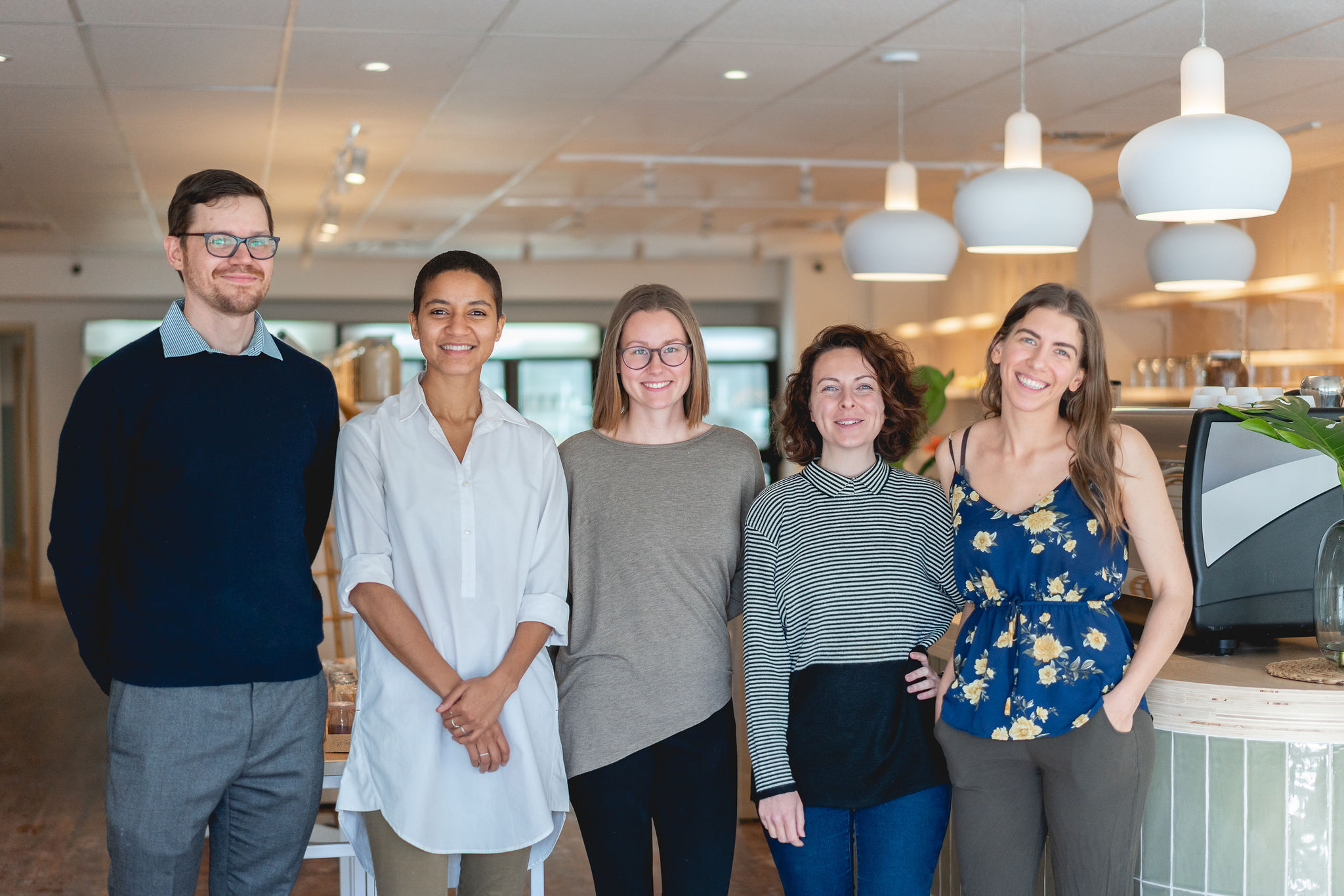
When we reopened, employees blended the two sides of their role and became well-versed in product knowledge and customer service and continued to assist in packing orders for the day’s pick-ups and deliveries. When the business started picking up in September after a relatively slow summer (as people could shop in-store again and BYOC), a new role was created. This role focused on weighing, packing, and organizing online orders and then delivering the GTA orders at the end of the day. Again, this was a lesson in the importance of remaining flexible and innovative in an everyday that was far from routine.
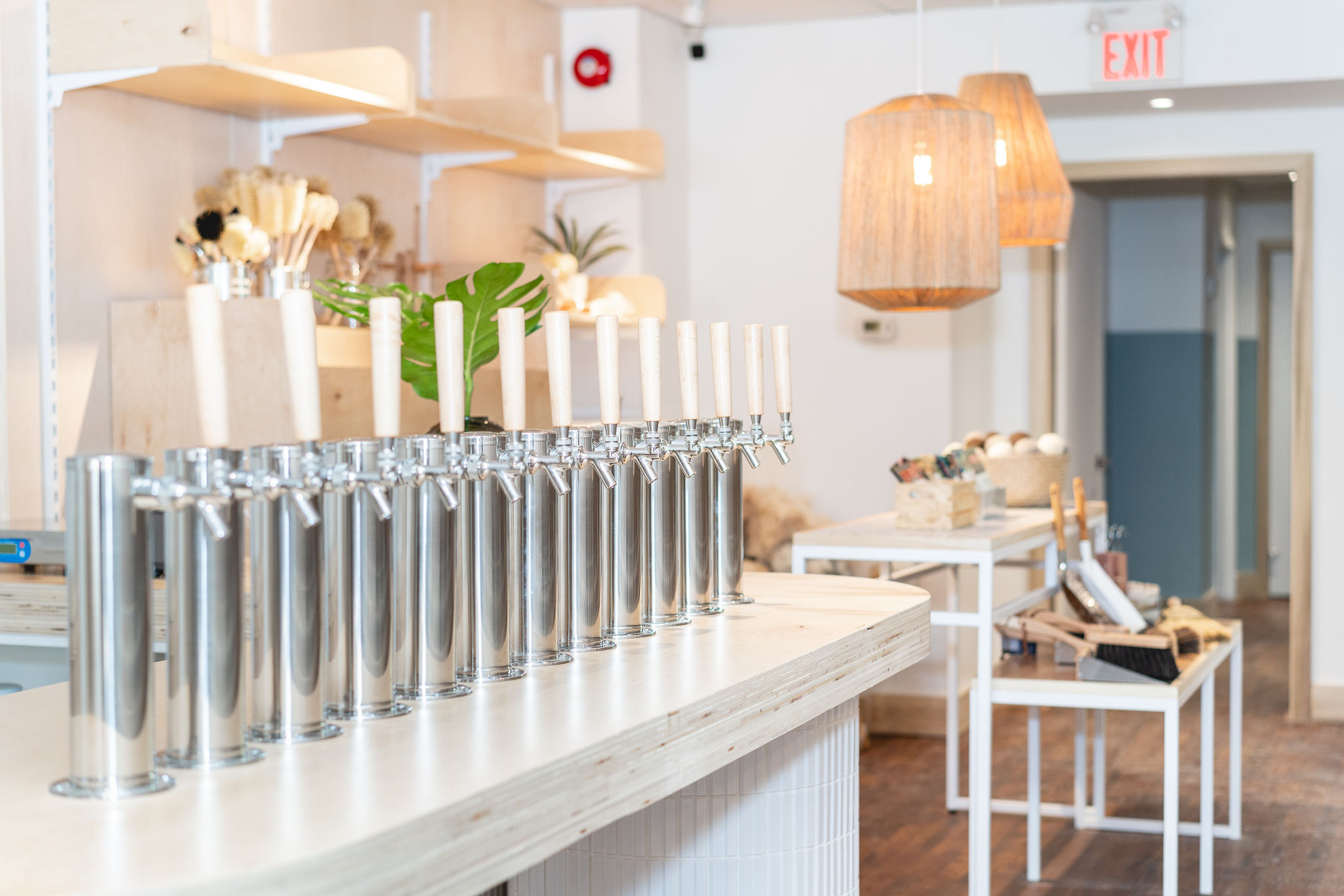
Bare Market is the only store where I’ve seen non-plastic packaging on everything, including frozen branded foods like the Beyond Meat Burgers. How did you manage that? And thank you for setting a fantastic precedent, by the way!
It can sometimes be rather difficult and time-consuming to find vendors who are willing to jump on board and work with us to cut out unnecessary packaging materials in the age of convenience. Food safety and food manufacturing challenges make it nearly impossible to eliminate plastic from the supply chain. However, it is one of our top priorities to eliminate unnecessary packaging wherever we can and reuse or repurpose packaging wherever we cannot.
We try to work with vendors for bulk food items to see where we really could cut back on waste. For instance, the frozen dumplings we carry are sent to us in plastic pails we had previously received other products in and have then emptied, cleaned, and sanitized. This Toronto-based company has worked with us to clean and refill our pails for each order instead of sending them in single-use bags or boxes.

When we do receive plastic or cardboard packaging, we try to use it in-store to the best of our ability or offer it to our community. For instance, we reuse cardboard boxes for heavy local deliveries and Canada-wide shipping. The trendy “zero waste” term is one we avoid using at bare market as we understand that current systems of power and access do not realistically allow for it.
We believe it is much more reasonable and achievable as a business to make every effort to refuse single-use items where we can. Where we can’t [avoid packaging], we reduce by buying in bulk, reuse by being innovative, repurpose by working with the community and our creative and passionate staff, and, finally, we recycle responsibly when we have exhausted all other avenues.
Is the in-store cafe usually a big part of the business? I’m sure that right now it’s fairly strictly limited. What kinds of things do sit-down customers order the most?
The low-waste cafe was designed from the get-go to: a) Offer food and drinks sans waste, and b) To upcycle any surplus food in the grocery section of the store and make it into delicious snacks and meals to sell. When we were open before COVID the café had indoor seating and was a bustling community space where customers had the option and were indeed encouraged to use a reusable plate and mug and enjoy the atmosphere of the clean, fresh aesthetic that bare market offers.
We have offered an option from the very start and continue to allow is BYOC, encouraging customers to bring their mugs or to-go cups, borrow our mugs for a small refundable deposit, or borrow our mugs and plates and bring them to our outdoor tables. Although we no longer offered indoor seating according to COVID guidelines and did not keep the café open outdoors through last Spring and this winter, we still operate with a BYOC model and allow for outdoor seating when government guidelines permit.
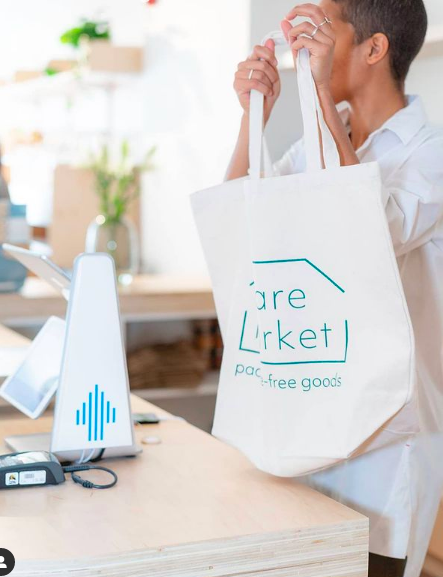
However, with the lockdown and the initial move online, the café did become more obsolete. When the café reopened in July 2020, customers were allowed to sit in the outdoor seating we had arranged, but unfortunately, restrictions made that space very limited. We offer a reusable takeaway mug option for a $5 deposit, but potential customers who are just passing by often do not purchase from the café as there is no disposable option for cups.
As bare market grows this summer, we plan to launch the to-go snacks and meals we originally intended to when we first opened to close the loop on our surplus produce.
What products are you guys the most excited about? Anything up and coming shortly?
It’s fantastic that more and more people are getting vaccinated. When capacity restrictions were not in place, bare market was a busy refillery with plans to use the space for community events and allow more local artisans and farmers to be featured and supported. We are most excited to use the area as we initially intended. A safe space to host events, educate the community, and host workshops on reducing your waste and extending the valuable message that there are alternatives to the convenient options we have grown accustomed to.
We need to make intentional decisions in our purchases and use our buying power to make a positive environmental and social impact throughout the supply chain.
For more information kindly visit:
Website: https://baremarket.ca/
Instagram: https://www.instagram.com/baremrkt/

Author: Mandy Gardner, Content Writer, Toronto, Canada. If you have any stories or comments to share kindly email: –smandylouise@gmail.com





